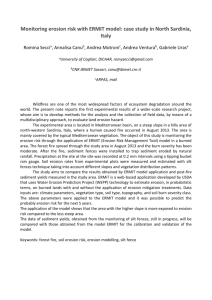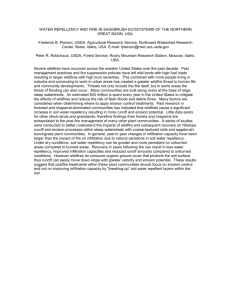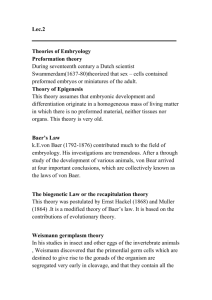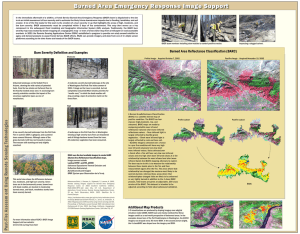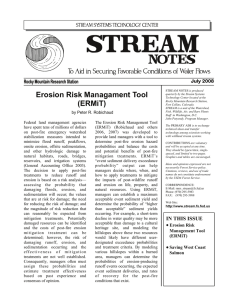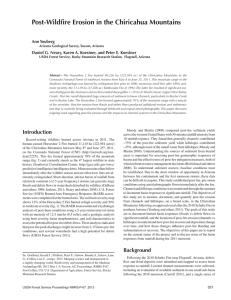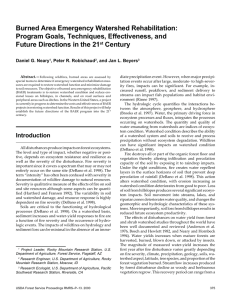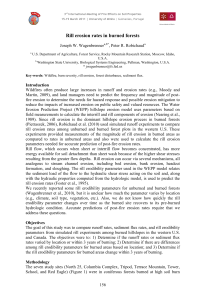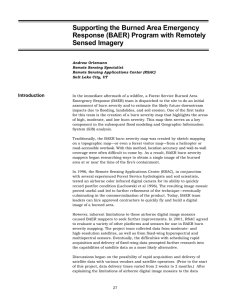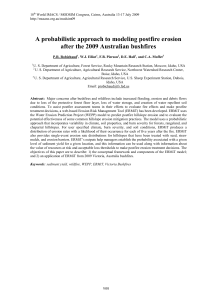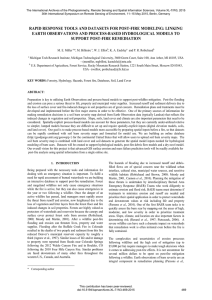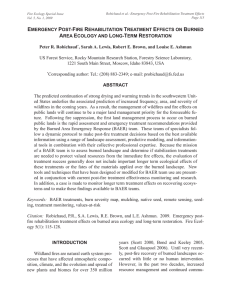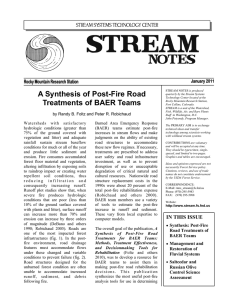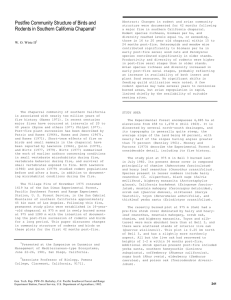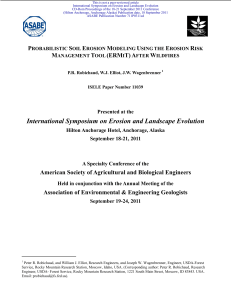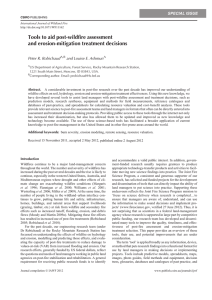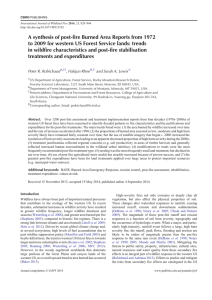Science
advertisement
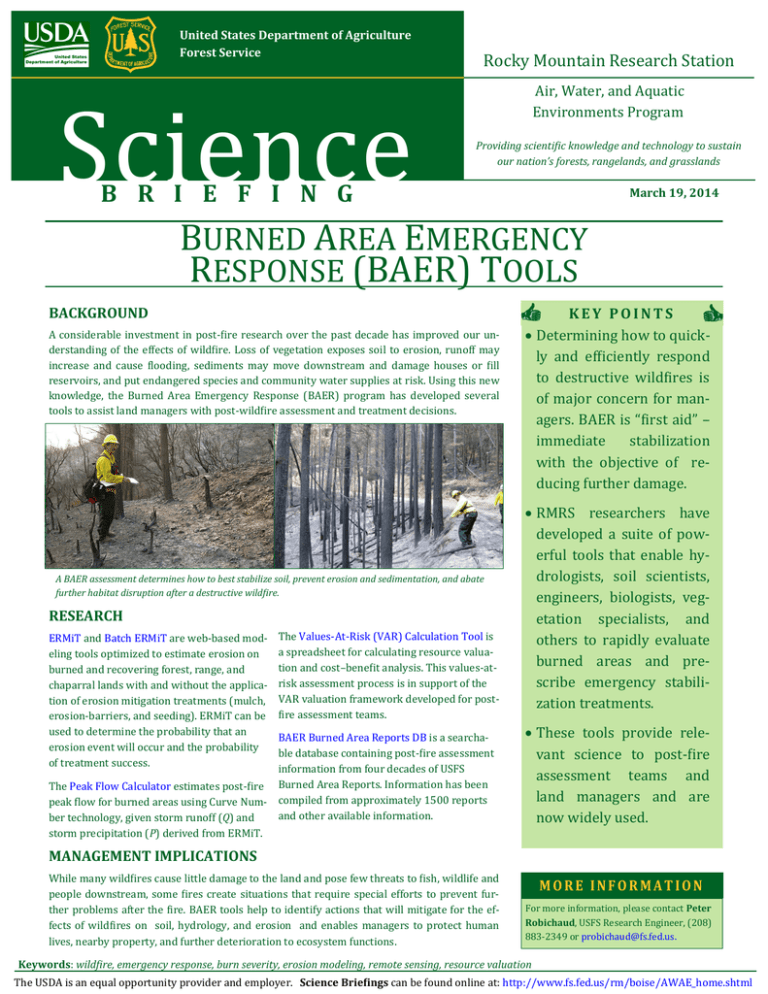
United States Department of Agriculture Forest Service Science Rocky Mountain Research Station Air, Water, and Aquatic Environments Program Providing scientific knowledge and technology to sustain our nation’s forests, rangelands, and grasslands B R I E F I N G March 19, 2014 BURNED AREA EMERGENCY RESPONSE (BAER) TOOLS BACKGROUND A considerable investment in post-fire research over the past decade has improved our understanding of the effects of wildfire. Loss of vegetation exposes soil to erosion, runoff may increase and cause flooding, sediments may move downstream and damage houses or fill reservoirs, and put endangered species and community water supplies at risk. Using this new knowledge, the Burned Area Emergency Response (BAER) program has developed several tools to assist land managers with post-wildfire assessment and treatment decisions. A BAER assessment determines how to best stabilize soil, prevent erosion and sedimentation, and abate further habitat disruption after a destructive wildfire. RESEARCH ERMiT and Batch ERMiT are web-based modeling tools optimized to estimate erosion on burned and recovering forest, range, and chaparral lands with and without the application of erosion mitigation treatments (mulch, erosion-barriers, and seeding). ERMiT can be used to determine the probability that an erosion event will occur and the probability of treatment success. The Values-At-Risk (VAR) Calculation Tool is a spreadsheet for calculating resource valuation and cost–benefit analysis. This values-atrisk assessment process is in support of the VAR valuation framework developed for postfire assessment teams. BAER Burned Area Reports DB is a searchable database containing post-fire assessment information from four decades of USFS The Peak Flow Calculator estimates post-fire Burned Area Reports. Information has been peak flow for burned areas using Curve Num- compiled from approximately 1500 reports and other available information. ber technology, given storm runoff (Q) and storm precipitation (P) derived from ERMiT. KEY POINTS Determining how to quickly and efficiently respond to destructive wildfires is of major concern for managers. BAER is “first aid” – immediate stabilization with the objective of reducing further damage. RMRS researchers have developed a suite of powerful tools that enable hydrologists, soil scientists, engineers, biologists, vegetation specialists, and others to rapidly evaluate burned areas and prescribe emergency stabilization treatments. These tools provide relevant science to post-fire assessment teams and land managers and are now widely used. MANAGEMENT IMPLICATIONS While many wildfires cause little damage to the land and pose few threats to fish, wildlife and people downstream, some fires create situations that require special efforts to prevent further problems after the fire. BAER tools help to identify actions that will mitigate for the effects of wildfires on soil, hydrology, and erosion and enables managers to protect human lives, nearby property, and further deterioration to ecosystem functions. MORE INFORMATION For more information, please contact Peter Robichaud, USFS Research Engineer, (208) 883-2349 or probichaud@fs.fed.us. Keywords: wildfire, emergency response, burn severity, erosion modeling, remote sensing, resource valuation The USDA is an equal opportunity provider and employer. Science Briefings can be found online at: http://www.fs.fed.us/rm/boise/AWAE_home.shtml
